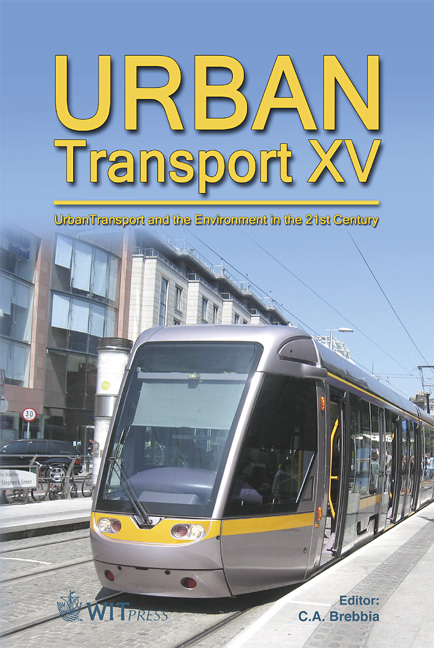Investigating Predictors Of The Demand For Public Transport In Melbourne, Australia
Price
Free (open access)
Transaction
Volume
107
Pages
12
Page Range
313 - 324
Published
2009
Size
277 kb
Paper DOI
10.2495/UT090281
Copyright
WIT Press
Author(s)
J. F. Odgers
Abstract
The key aim of paper is to identify the most parsimonious set of independent variables that can be used to forecast the near to medium term public transport patronage levels in Melbourne, Australia. Melbourne is a capital city with a current population of 3.88 million; it is predicted grow to between 4.5 to 5 million residents by 2030. Melbourne is served by a multi mode (train, tram and bus) and multi zone public transport system that over the last six years has seen total average annual patronage levels increase by almost 4.5% per annum. The reported patronage levels for Melbourne’s train system and its tram system were collected for the 25 years 1983-84 to 2007-08. The seven independent variables used are the price of a weekly full price zone 1 ticket; the average price per litre of unleaded petrol; the lagged petrol price; the resident population of the Melbourne Statistical Division (MSD); the number of totals persons employed in the MSD; average total earnings per week; and % of housing interest to disposable household income. Ordinary Least Squares (OLS) regression analysis is employed. The variable with the strongest correlation with annual train patronage over the whole 25 years is the average price/litre of unleaded petrol (adjusted R2 of 0.913). The variable with the highest correlation to tram patronage is the average unleaded fuel price lagged 6 months (adjusted R2 of 0.87). Multivariate regression analysis indicates that the addition of % of housing interest to household disposable income increases adjusted R2 for train patronage to 0.957. Indicative forecasts of Melbourne’s train patronage over the next 5 years are presented. The study’s limitations are outlined. Keywords: public transport, demand forecasting, transport planning, regression analysis.
Keywords
public transport, demand forecasting, transport planning, regression analysis





